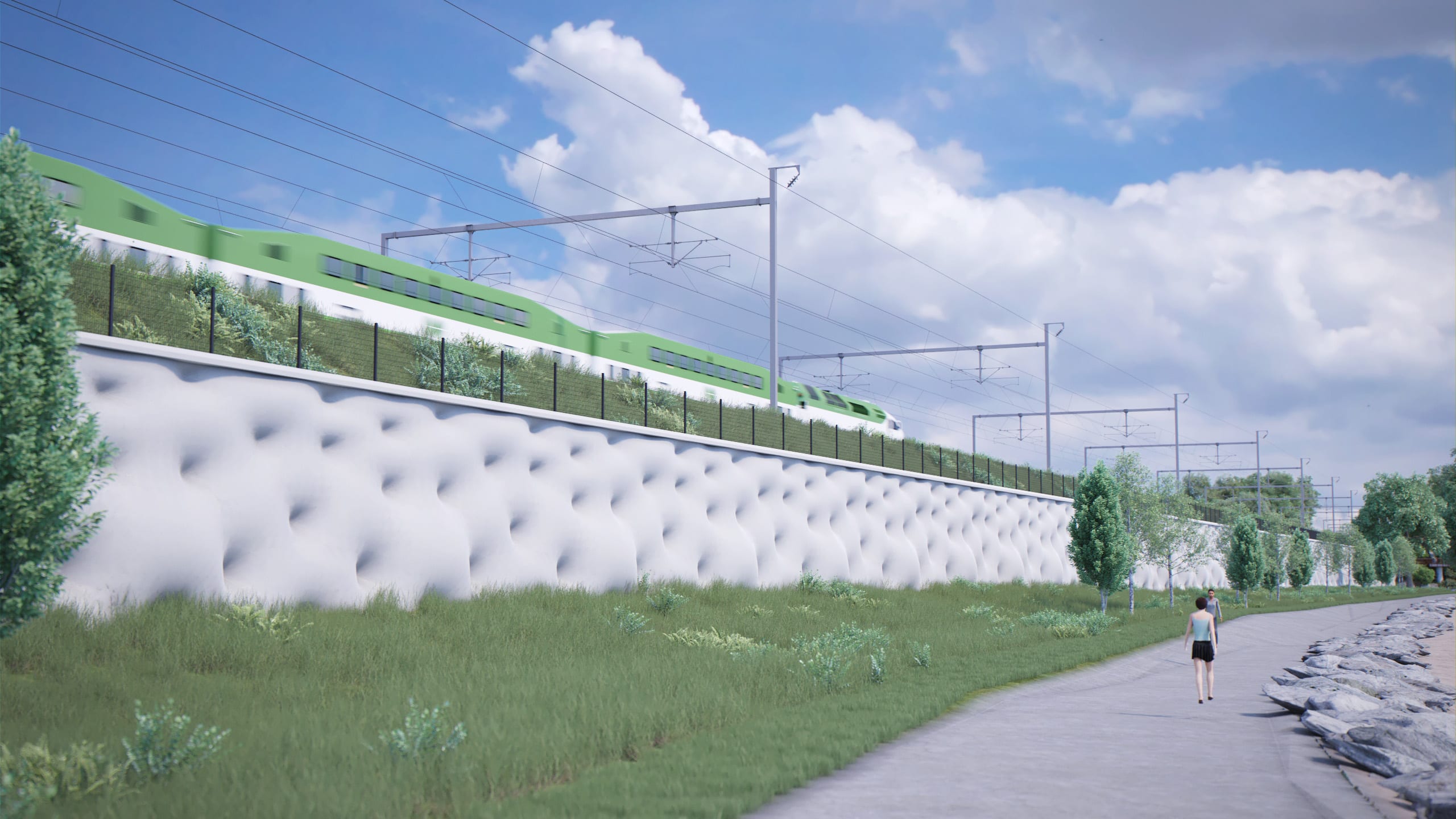GO Expansion explained – What it means for you
GO Expansion will transform the GO network from a commuter service into an all-day, rapid system.
Apr 13, 2022
GO Expansion will transform the GO rail network from a commuter service into an all-day, rapid system.
GO Expansion includes all the work necessary to deliver two-way, all-day service across core GO Lines – on the Lakeshore East and West Lines (Burlington to Oshawa), Kitchener Line (Union Station to Bramalea ), Barrie Line (to Bradford) and Stouffville Line (to Unionville). Later phases will also include service expansions to Niagara, Kitchener-Waterloo and Bowmanville.
Rapid rail systems, sometimes called metro-style, differ from commuter rail as they provide two-way, all-day service with a train every 15 minutes or better. They typically have higher-speed electric trains that can reach a maximum speed around 120 km/h, with fast braking and acceleration reducing the amount of time they spend in stations.
Overhead wires will power electric trains, reducing localized emissions. This is an artist’s rendering and it is subject to change. (Metrolinx image)
Rapid rail service successfully manages demand and supports economic prosperity in over 60 cities around the world, including London, Tokyo, Paris, and Sydney.
London has frequent electric railway services on 40 routes in a network that has developed progressively since the 1920s into a rapid rail style system.
The Tokyo rail network provides high frequency services across the metropolitan region and into neighboring regions using fast electric trains.
The GO Expansion program is intended to manage both shorter term and long-term mobility needs.
Historically, the system has provided a service that is focused on meeting the needs of commuters to downtown Toronto. However, going forward, the network will be transformed into a regional backbone that connects high-growth communities across the region.
With more trips and shorter journey times, this type of service gives people opportunities to choose transit for more than just commuting.
Population growth – which has already bounced back to pre-COVID levels – will play a big factor in future transit needs.
Metrolinx is planning transit for 2051, when the Greater Golden Horseshoe is expected to have a population of 14.9 million, up from 9.8 million today.
What makes up GO Expansion?
There are three main areas of improvements across the network, including early works, off-corridor work, and the final piece – on-corridor work.
Over $11 billion of early works and off-corridor projects are already underway, including:
• 16 GO stations under renovation (Agincourt, Aurora, Bradford, Bramalea, Brampton, Eglinton, King City, Long Branch, Maple, Milliken, Mount Dennis, Old Elm, Rutherford, Weston, Union, Unionville)
• 1 new GO station (Bloomington) and 2 expanded stations completed (Cooksville, Kipling)
• 29 GO stations undergoing early station improvements (customer service and safety improvements, including PA systems, platform edge tiles, display boards)
• 6 expansions on corridors underway (Barrie Line, Kitchener Line, Lakeshore East and West Lines, Stouffville Line, and the Union Station corridor)
• 4 grade separations (Burloak Drive, Davenport Diamond, Rutherford Road, Steeles Avenue)
• 5 tunnel/bridge expansions (401/409 tunnel expansion, Drury Lane pedestrian bridge, bridge, Major Mackenzie pedestrian bridge, Rouge River bridge rehabilitation, Yonge Street bridge)
• 2 new rail maintenance facilities (Whitby Facility and Lincolnville Layover)
GO Expansion – On-Corridor Works Project
The largest and most complicated element of the program is the GO Expansion On-Corridor Works package, a single innovative, fully integrated contract to run more and better service.
This project must integrate its work with all the new and existing stations and lines to run more and better service.
• Operation of train services including train crewing
• Timetable planning and train control for all operators across the GO-owned network
• Design, construction, integration of the railway corridor (civil infrastructure, tracks, systems, signaling, etc.)
• Maintenance and rehabilitation of new railway corridor assets and select existing railway corridor assets
• Maintenance, servicing, and cleaning of all rolling stock and new electric vehicles
• Construction of new maintenance and train storage and/or layover facilities
• Reconstruction of Union Station track and platforms
The winning team will design, build, operate, and maintain the new infrastructure and trains for 25 years, a massive, multi-billion-dollar undertaking.
GO Expansion, along with four new subways and four light rail transit lines, represent an historic $61 billion investment to build an interconnected network that will transform public transit in Ontario.
*Editor’s note: GO Expansion construction map has been updated from an earlier version due to a factual error
by Patricia Pytel Metrolinx Capital Communications Manager
